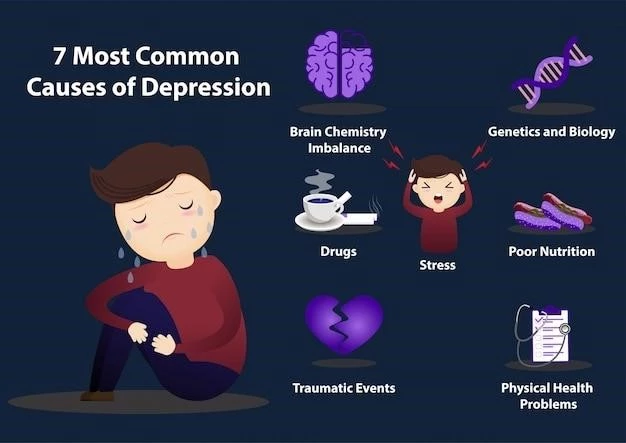Introduction
Taeniasis is a parasitic infection caused by tapeworm species transmitted through the consumption of undercooked meat․ Learn more about this condition․
Definition of Taeniasis
Taeniasis is an intestinal infection caused by tapeworm species such as Taenia saginata, Taenia solium, and Taenia asiatica․ It is acquired through the consumption of undercooked or raw beef and pork containing the larvae of these tapeworms․ This condition is characterized by the presence of adult tapeworms in the intestines of infected individuals․
Causes and Transmission
Taeniasis is primarily caused by the consumption of raw or undercooked beef or pork contaminated with tapeworm larvae․ The transmission occurs when individuals ingest these larvae, leading to the development of tapeworm infections in the intestines․
Transmission through Ingestion
The transmission of Taeniasis occurs when individuals ingest food contaminated with tapeworm larvae․ Ingestion of undercooked or raw meat, particularly beef and pork, containing the parasite’s larvae is the primary route of transmission for Taeniasis in humans;
Infection from Pork and Beef
Taeniasis can be acquired by consuming raw or undercooked pork and beef contaminated with tapeworm larvae․ The ingestion of these larvae can lead to the development of tapeworm infections in humans, causing intestinal symptoms and potential complications․ It is crucial to ensure proper cooking of meat to prevent the transmission of tapeworms․

Symptoms and Diagnosis
Taeniasis can manifest with mild or absent symptoms, making diagnosis challenging without proper stool examination to identify tapeworm segments․ Understanding the symptoms and effective diagnostic methods is crucial for prompt treatment․
Mild or Absence of Symptoms
Often, individuals with Taeniasis may not experience significant symptoms, leading to challenges in diagnosis․ Some may have no symptoms at all, while others may experience mild issues like abdominal discomfort․ Understanding the variability in symptom presentation is essential in identifying and treating Taeniasis effectively․
Identification through Stool Examination
Stool examination is a crucial method for identifying Taeniasis as it allows the detection of tapeworm segments or eggs in the feces of infected individuals․ This diagnostic approach aids in confirming the presence of tapeworm infections and guiding appropriate treatment strategies․
Types of Taeniasis
Taeniasis is caused by three tapeworm species⁚ Taenia saginata (beef tapeworm), Taenia solium (pork tapeworm), and Taenia asiatica (Asian tapeworm), transmitted through consuming contaminated meat․
Taenia Saginata (Beef Tapeworm)
Taenia saginata, also known as the beef tapeworm, is one of the tapeworm species responsible for causing Taeniasis in humans․ This parasite is primarily transmitted through the consumption of raw or undercooked beef contaminated with the larvae of the tapeworm․ Understanding the characteristics and implications of Taenia saginata infection is crucial for effective management and prevention of this form of Taeniasis․
Taenia Solium (Pork Tapeworm)
Taenia solium, commonly known as the pork tapeworm, is one of the tapeworm species responsible for causing Taeniasis in humans; This parasite is transmitted through the ingestion of raw or undercooked pork contaminated with the larvae of the tapeworm․ Understanding the characteristics and implications of Taenia solium infection is crucial for effective management and prevention of this form of Taeniasis․
Taenia Asiatica (Asian Tapeworm)
Taenia asiatica, also known as the Asian tapeworm, is a species of tapeworm that can cause Taeniasis in humans․ This tapeworm is transmitted through the consumption of undercooked pork contaminated with the larvae of the parasite․ Understanding the characteristics and implications of Taenia asiatica infections is vital for appropriate diagnosis and management of this type of Taeniasis․
Treatment and Medication
Primary medication for Taeniasis is Praziquantel, administered orally at specific doses․ Caution is advised in patients with cysticercosis due to potential complications․
Primary Medication⁚ Praziquantel
Praziquantel is the primary medication used to treat taeniasis, administered orally at specific doses depending on the individual’s age․ Caution is advised in patients with cysticercosis due to potential complications that may arise during treatment;
Caution with Cysticercosis Patients
Patients with cysticercosis require caution when treating Taeniasis with Praziquantel due to potential complications arising from cysticidal effects on dying cysts, which can lead to inflammatory reactions and neurological symptoms․ Careful monitoring and management are necessary in such cases to ensure optimal outcomes․
Complications and Risks
Taeniasis can lead to neurological symptoms like epilepsy and the development of cysticercosis, especially in cases of Taenia solium infection․ Prompt recognition and treatment are essential to mitigate potential risks and complications associated with this parasitic infection․
Neurological Symptoms and Epilepsy
Taeniasis can lead to neurological symptoms such as epilepsy in severe cases, especially with Taenia solium infection․ The presence of tapeworm larvae in the central nervous system can result in neurological complications, emphasizing the importance of prompt treatment and monitoring to prevent potential seizures and other neurological manifestations․
In cases of Taeniasis, there is a risk of developing cysticercosis, especially with Taenia solium infection․ Cysticercosis occurs when tapeworm larvae migrate to tissues like the brain, leading to potential neurological complications․ Understanding the link between Taeniasis and cysticercosis is essential in managing the risks associated with these parasitic infections․
Prevention
Properly cooking meat and adopting sanitation practices are crucial to prevent taeniasis infection and avoid potential contamination, especially in regions with high prevalence rates․
Development of Cysticercosis
In cases of Taeniasis, there is a risk of developing cysticercosis, especially with Taenia solium infection․ Cysticercosis occurs when tapeworm larvae migrate to tissues like the brain, leading to potential neurological complications․ Understanding the link between Taeniasis and cysticercosis is essential in managing the risks associated with these parasitic infections․
Sanitation Practices to Avoid Infection
Adopting proper sanitation practices is essential to prevent Taeniasis infection․ Avoiding contamination of food and water sources, maintaining personal hygiene, and ensuring the cleanliness of living environments can reduce the risk of exposure to tapeworm larvae and help prevent the transmission of this parasitic infection․
Global Impact
Taeniasis, caused by tapeworm species like Taenia saginata, Taenia solium, and Taenia asiatica, poses zoonotic concerns and challenges to the livestock industry on a global scale․ Understanding the impact of these parasitic infections is vital for public health and agricultural practices․
Zoonotic Concerns and Livestock Industry
Taeniasis, particularly the infections caused by tapeworm species like Taenia saginata, Taenia solium, and Taenia asiatica, raises zoonotic concerns․ The impact of these parasitic infections extends to the livestock industry, especially in regions experiencing economic growth where livestock plays a significant role in the economy․ Understanding the zoonotic potential and implications for animal health and production is essential for managing the risks associated with Taeniasis in both human and animal populations․

Geographic Distribution
Taeniasis is a global health concern, with distribution mainly in low- and middle-income countries where risk factors like poor sanitation and undercooked meat consumption are prevalent․
Regions Affected by Taeniasis
Taeniasis is prevalent in low- and middle-income countries with poor sanitation and where undercooked meat consumption is common․ Regions in Africa, Asia, and Latin America have higher incidences of Taeniasis due to cultural practices and limited access to resources for food safety and hygiene․
Research Findings
Recent studies emphasize the role of Praziquantel in treating active Taeniasis, highlighting considerations for patients with cysticercosis to avoid complications․ Understanding the effectiveness and risks of treatment strategies is crucial in managing Taeniasis infections․
Case Studies and Medical Discoveries
Recent research findings have highlighted the effectiveness of Praziquantel for treating active Taeniasis․ Case studies emphasize the importance of caution when treating patients with cysticercosis to avoid potentially severe complications․ These medical discoveries provide valuable insights into the management of Taeniasis infections and associated risks, showcasing advancements in treatment strategies and patient care․
